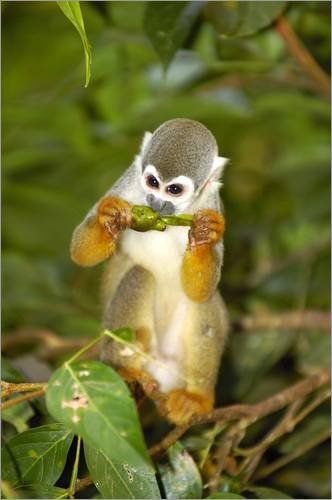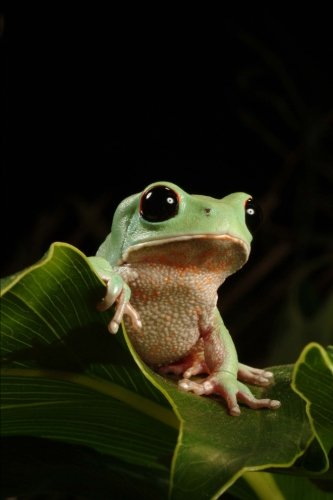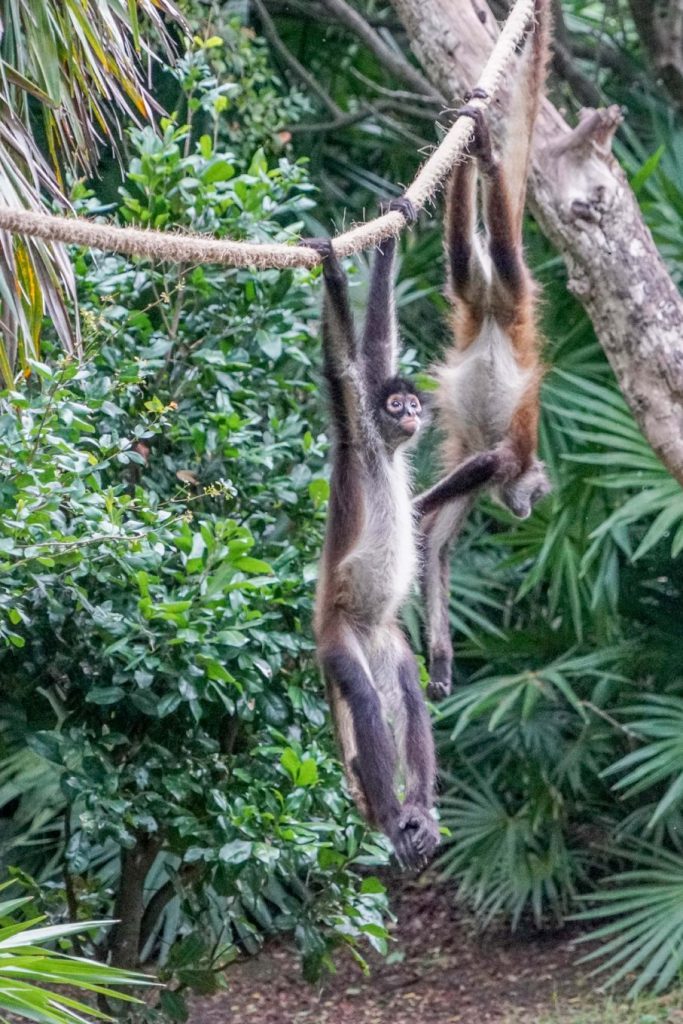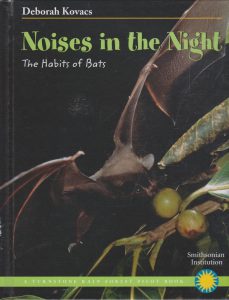
A huge number of animals live in rainforests, including microscopic animals, invertebrates (like insects and worms), fish, reptiles, amphibians, birds, and mammals. The different rainforests of the world support different populations of animals.
Different animals live in different strata of the rainforest.”Strata” means “layers.” Scientists divide rainforests into different strata (or layers) for easy reference. Each of these layers is a very different environment and supports different life forms.
These strata differ in many ways, including temperature, the amount of sunlight that they receive, the wetness of the environment, and the amount and types of life forms living in it.
Almost all of the worlds tropical rain forests lie close to the equator. These forests are known for their tall trees, dense vegetation, and for being humid and wet. There are four layers in a tropical rainforest biome (Forest Floor, Understory Layer, Canopy Layer, and Emergent Layer) and there are animals that have adapted to living in each one (or more) of these layers.
For example, birds live in the canopy (upper leaves of the trees) and in the emergents (the tops of the tallest trees). Large animals (like jaguars) generally live on the forest floor, but others (like monkeys and sloths) are arboreal (living in trees). Insects are found almost everywhere.
Tropical Rainforest Floor Layer Animals

The forest floor receives very little light and is teeming with insects and decomposing plants and animals. Large snakes and large mammals, too heavy for the upper layers, roam this area. These include:
1.Anteaters
2.Armadillos
3.Golden Lion Tamarins
4.Sumatran Rhinoceros
5.Pythons
6.Anacondas
7.Tigers
8.Jaguars
9.Leopards
Tropical Rainforest Understory Layer Animals

Tree Frog Journal: 150 page lined notebook/diary
This layer of the forest, which is under the thick forest canopy, is characterized by little light, short trees, and short plants. Animals that have adapted to this layer include:
1.Bats
2.Tree Frogs
3.Salamanders
4.Emerald Tree Boas
Tropical Rainforest Canopy Layer Animals

Spider Monkeys Playing Together Animal Journal: 150 Page Lined Notebook/Diary
This layer of the rainforest, characterized by numerous tangled tree branches and leaves which block most of the sunlight, is by far the most populated layer. Bird and monkey species are among the most common animals found here. These include:
1.Toco Toucans
2.Macaws
3.Sloths
4.Howler Monkeys
5.Spider Monkeys
6.Gibbons
Tropical Rainforest Emergent Layer Animals

Harpy Eagle (21st Century Skills Library: Exploring Our Rainforests)
The Emergent Layer is the highest layer of a rainforest. It consist of a few trees that stick up above the canopy layer. Generally the only animals found this high are those that can fly such as birds and bats, including:
1.Harpy Eagles
2.Pygmy Gliders
There are so many animals living in tropical rainforest that scientist believe there are many that have not been discovered yet.
The reason there are so many animals inhabiting the worlds tropical rainforest is that the conditions are optimal for survival. There is plenty of food and water, there is shade from the heat, and plenty of shelter from the rain.
Many animals of the rainforest are camouflaged which aids them in avoiding predators. An example of this is the South American three-toed sloth. This animal has fur covered with green algae which is perfect camouflage in the forest canopy. Other animals use camouflage to hide in wait for prey. One such predator is the Boa Constrictor.
One adaptation quite the opposite of camouflage is that of the brightly colored poison arrow frogs and poison dart frogs. The bright colors of these species serve as a warning to predators not to eat them. These frogs are so poisonous that natives wipe their arrow heads on them to make them more lethal.
Some animals have adaptations that enable them to eat food that other animals can’t. For example parrots have strong beaks that crack the shells of very hard nuts.
Sometimes there are relationships between animals and plants that benefit both. Some trees depend on animals to spread the seeds of their fruit to distant parts of the forest. Birds and mammals eat the fruits, and travel some distance before the seeds are passed out in their poo in another part of the forest, where they germinate and grow.

Noises in the Night: The Habits of Bats (Rainforest Pilot)
Many animals are essential in the reproductive processes of forest plants. Bats are known to be pollinators of more than 300 plant species (many of which are economically important as timber, fuel, fiber, medicine, or dyes).
In Southeast Asia, bats pollinate popular forest fruits such as durian, banana and mango . Nectar-feeding birds and insects such as beetles, bees, and wasps are even more important than bats in tropical forests. In Panama, birds pollinate between 40% and 80% of forest plants .
Vertebrates undoubtedly play a role in forest maintenance. Many primates eat leaves and shoots, and their selection of food sources may alter the balance among different species of plants. When these animals eat certain species of plants and avoid others, the ones which are consumed will be suppressed, while those not eaten will gain a competitive advantage.
Orangutans feed on the shoots and soft stems of plants such as climbing bamboo, a plant which, by invading forest gaps, can hinder the regeneration of forest trees. Therefore a healthy orangutan population will prevent forest gaps from being overwhelmed by bamboos and other non-tree species, and leave room for tree regeneration and succession.
Pigs, in their search for food, turn over the soil, and rodents burrow and damage vegetation, but these soil disturbances enhance seed germination. Even when animals burrow in holes in trees, their waste products may provide nutrients for the trees.
Though relationships between different species in the rainforest can be interesting, the most amazing things you see in the rainforest are sometimes between a male and female of the same animal species. When some animals are looking to reproduce, or have babies, they need to attract another animal with which they can mate. Oftentimes, in species that have sexual reproduction, it is the male that tries to attract a female.
Some males attract females with amazing dances or colors, using tricks to try to show off for, or impress, a female. The cock-of-the-rock, a type of bird that lives in the undergrowth of the forest, has males with bright red and black color patterns. Five to 20 of these bright males fly, dance and call together in a group called a lek. These birds dance in a small area to try to attract one of the dull-colored females.
When a female arrives at the dancing grounds, the males dance and call even harder. Even with up to 20 males calling, only one male wins out—usually the brightest, the loudest, or the best dancer.
With all the different bright display colors of some animals, the dark, shadowy, green rainforest can be transformed into a beautiful show of moving colors.
A complete list of jungle animals would take you weeks and weeks to read, since there are millions of animals living in the world’s jungles, also known as tropical rainforests. About half of all the animal species on earth—mammals, birds, insects, amphibians and reptiles—would be on that list of jungle animals.
short list of some Jungle Animals In The Amazon
Top Predators: Jaguars, Cougars, Ocelots
Largest Animal: The Tapir
Rodent: Capybara (The World’s Largest Rodent!)
Reptiles: Anaconda, Bushmaster (poisonous snake) and Caimans (several species; the largest is the black caiman)
Amphibians: Poison Dart Frogs
Birds: Harpy Eagle, Macaws (including the scarlet macaw and the hyacinth macaw)
Primates: Spider monkeys, howler monkeys, capuchin monkeys, squirrel monkeys
Fish: Piranha
Insect: Leaf-Cutter Ant
short list of some Jungle Animals In Africa
Top Predator: The Leopard
Large Animals: The Jungle Elephant, The Okapi
Reptiles: Rock Python, Nile Crocodile, Mambas (several species of poisonous snakes)
Birds: Gray Parrot, Crowned Eagle
Primates: Chimpanzees, Bonobos, Gorillas, Mandrills, Baboons, Colobus Monkeys, Bush Babies
Fish: Tiger Fish
Insect: Termite
short list of some of Jungle Animals In Asia
Top Predators: The Tiger, The Leopard
Bears: Sun Bear, Sloth Bear
Bat: Flying Fox (Fruit-Eating Bat)
Largest Animals: Sumatran Rhinoceros, Elephant, Water Buffalo
Birds: Cockatoo, Black Eagle
Reptiles: Saltwater Crocodile, Burmese Python, Cobra (several species)
Primates: Orangutan, Gibbons, Macaque Monkeys, Langur Monkeys, Tarsiers
Fish: Betta (Siamese Fighting Fish)
If you have any information,questions, or feedback you would like to include in this webpage.
Please email momo19@naturekingdoms.com or leave your comments below.